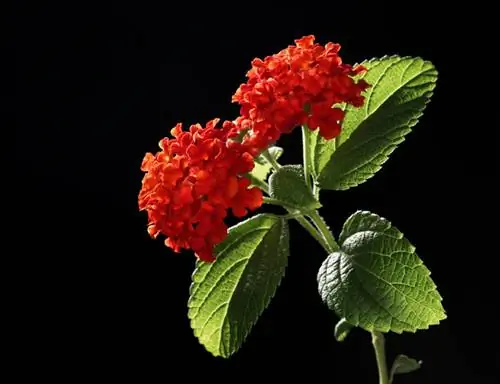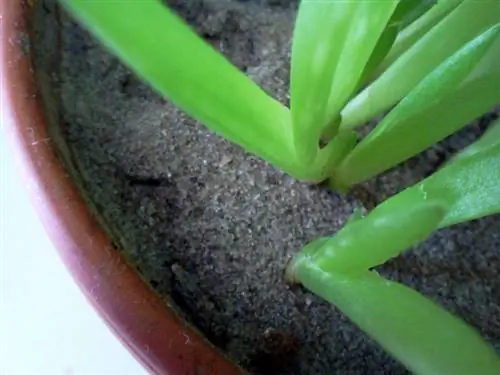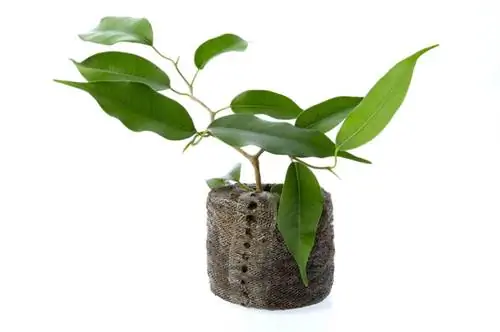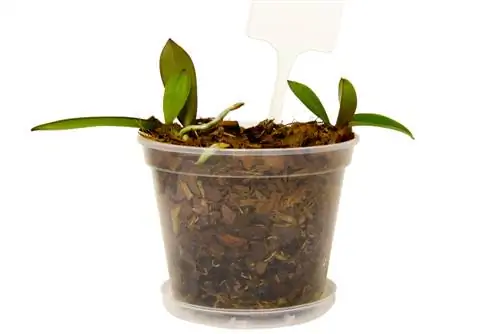- Author admin [email protected].
- Public 2023-12-16 16:46.
- Last modified 2025-01-23 11:20.
The lantana is one of the most fascinating plants for the garden or balcony. Properly cut, it blooms profusely and impresses with bright flower umbels that change color. The small shrub can be propagated yourself without any problems. With our tips, it's easy to grow small lantanas from cuttings.
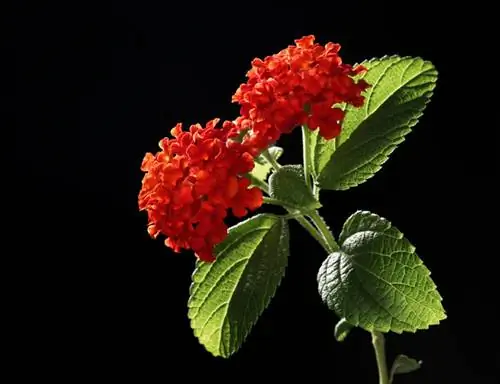
How can you successfully propagate lantana?
Wandry lantana can be easily propagated by cuttings. To do this, cut off shoot tips with two pairs of leaves during the growth period and put them in potting soil or in a glass of water. After two to three weeks, roots form and the plants can continue to grow in pots.
Cut cuttings
You can produce offshoots throughout the entire growing season. Since the plant should be cut regularly in order to produce many flowers, there will always be clippings that you can use for breeding.
Head cuttings form roots particularly quickly. These are the top shoot tips with about two pairs of leaves. Cut off directly above the third pair of leaves, creating a small stem.
Preparing the potty
Fill small growing pots (€8.00 on Amazon) or multi-pot plates with growing soil and press them down lightly. Moisten the substrate with a sprayer without completely soaking it.
- Place prepared lantana cuttings into the soil.
- Cover containers with a hood or a clear plastic bag.
- Place in a bright, sunny place.
- Air regularly to avoid rot.
- Keep substrate evenly moist.
After just two to three weeks, roots have formed and the plants are developing new leaves.
Growing in water
Rooting in a glass of water also works very well. The cutting should be around ten centimeters tall. The leaves are removed in the lower area, leaving only two pairs of leaves. Place the glass at normal room temperature in a bright place out of direct sunlight.
The lantana offshoots form roots within about two weeks. Don't leave the cuttings in the water for too long, as the fine roots would grow into a ball and then be difficult to separate. Plant the cuttings in pots filled with commercially available potting soil or growing soil, where the small plants will quickly develop into stately lantanas.
Tip
Always use sharp cutting tools to avoid bruising the mother plant. Plant stems injured in this way are prone to rot, which in turn can lead to plant diseases.

